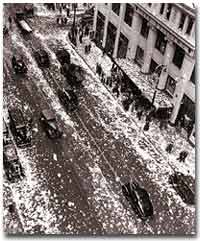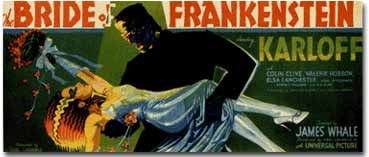48e. Social and Cultural Effects of the Depression

Sports provided a distraction from the Depression. Shown is a ticker tape parade held in honor of the Detroit Tigers after winning the 1935 World Series.
No nation could emerge from the cauldron of national crisis without profound social and cultural changes. While many undesirable vices associated with hopelessness were on the rise, many family units were also strengthened through the crisis. Mass migrations reshaped the American mosaic. While many businesses perished during the Great Depression, others actually emerged stronger. And new forms of expression flourished in the culture of despair.
The Great Depression brought a rapid rise in the crime rate as many unemployed workers resorted to petty theft to put food on the table. Suicide rates rose, as did reported cases of malnutrition. Prostitution was on the rise as desperate women sought ways to pay the bills. Health care in general was not a priority for many Americans, as visiting the doctor was reserved for only the direst of circumstances. Alcoholism increased with Americans seeking outlets for escape, compounded by the repeal of prohibition in 1933. Cigar smoking became too expensive, so many Americans switched to cheaper cigarettes.
Higher education remained out of reach for most Americans as the nation's universities saw their student bodies shrink during the first half of the decade. High school attendance increased among males, however. Because the prospects of a young male getting a job were so incredibly dim, many decided to stay in school longer. However, public spending on education declined sharply, causing many schools to open understaffed or close due to lack of funds.
Demographic trends also changed sharply. Marriages were delayed as many males waited until they could provide for a family before proposing to a prospective spouse. Divorce rates dropped steadily in the 1930s. Rates of abandonment increased as many husbands chose the "poor man's divorce" option — they just ran away from their marriages. Birth rates fell sharply, especially during the lowest points of the Depression. More and more Americans learned about birth control to avoid the added expenses of unexpected children.
Mass migrations continued throughout the 1930s. Rural New England and upstate New York lost many citizens seeking opportunity elsewhere. The Great Plains lost population to states such as California and Arizona. The Dust Bowl sent thousands of "Okies" and "Arkies" looking to make a better life. Many of the migrants were adolescents seeking opportunity away from a family that had younger mouths to feed. Over 600,000 people were caught hitching rides on trains during the Great Depression. Many times offenders went unpunished.

Films like The Bride of Frankenstein (1935) entertained Americans by the thousands despite the hardships brought by the Great Depression.
Classic films like Frankenstein, It Happened One Night, and Gone with the Wind debuted during the Great Depression. Radio flourished as those who owned a radio set before the crash could listen for free. President Roosevelt made wide use of radio technology with his periodic "fireside chats" to keep the public informed. Dorothea Lange depicted the sadness of Depression farm life with her stirring photographs.
And an apt musical form — the blues — gained popularity during the decade.





